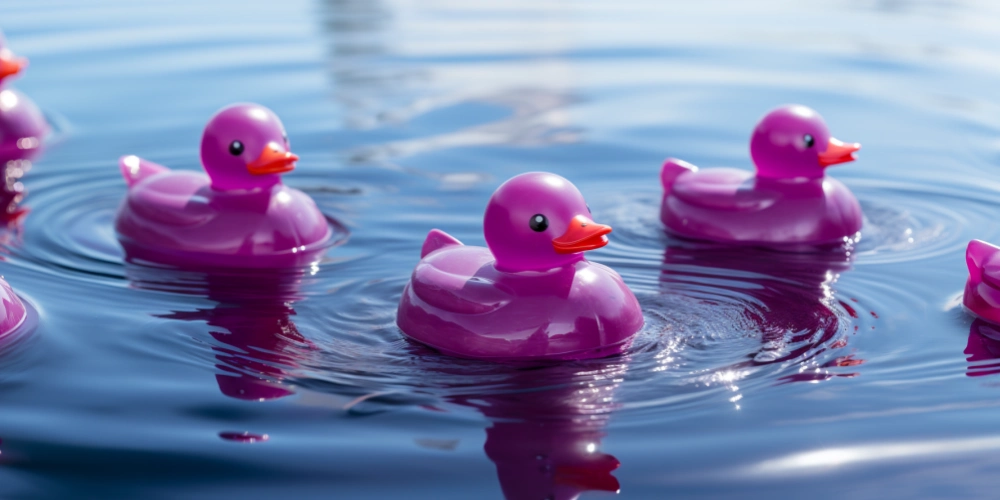
Plastic coloring: how we do it
It may sound strange, but to explain everything you need to know about plastic processing, we will sit down at the table! Those who have already read some articles on this blog know that our journey will be full of flavors because explaining what masterbatches are is easier (and more fun) through culinary images. All of us, at least once in our lives, have followed a recipe that required mixing water and flour. Cookies, cakes, bread... all these foods have one thing in common: the mixing of ingredients of different natures, just like the masterbatch. Ready? The time has finally come to reveal the secrets of our recipe for coloring plastic.
Recipe and formulation, with love
Let's take an example. When we set to the stove, the first thing to do is to gather all the ingredients we need for the recipe. Punctually, when the arrow of goodwill strikes us, the fridge is empty, so it is necessary need to go to buy everything we need. Here comes the first dilemma: where to go? To the supermarket, where everything is already well-packaged? Or to local shops that provide more genuine ingredients? The discount store or the upscale food boutique in the city center? It depends on the purpose. Certainly, if the desire is impress and delight our guest's palate, perhaps for a candlelight dinner, we will choose the best products, carefully selected. For us at Gaypa, it's the same: every masterbatch recipe for coloring plastic is formulated as if it were the menu for a romantic evening. All the ingredients are chosen with care, and the dish is meticulously prepared.

Plastic coloring: a matter of ingredients and method
Margherita pizza is made in a similar way almost everywhere. In the end, the ingredients are always the same, as is the procedure for preparing it. Essentially, there isn't much room for variation. The difference lies entirely in the choice of ingredients to create the pizza and the method the pizza-chef uses to make it unique. Just like a skilled baker, we also choose to use high-quality, certified raw materials from reliable sources to produce masterbatch, and we use the established method of mechanical dispersion. This technique is rooted in the very history of our company: when Gaypa was founded extrusion was used to mix, or disperse, the pigments. Over time, we have become increasingly specialized in the use of this technology and the study of extruders. Today we have made it our trademark, our signature.
The advantages of mechanical dispersion
The advantages of mechanical dispersion? The respect for the individual substance. Indeed, certain pigments are more delicate than others and require specific processing. Some need high strength and temperature, while others might break under such conditions. This is why mechanical extrusion turns out to be the best choice: it allows us to process the products individually, ensuring maximum care to each one. The process is similar to how yeast works in bread-making: often it can happen that, to activate, it cannot come into immediate contact with salt or oil. So, it is previously dissolved separately in water, sometimes with a pinch of sugar to help it to activate. Only after this step the yeast can be added to the dough, allowing it to work optimally. The same applies to some pigments: they need to be processed alone first to work better later, in combination with other substances.
Which method to choose for plastic coloring?
There is also chemical dispersion. This method uses chemical agents, known as dispersants, that create the mix by blending the various components of the formulation. However, this technique tends to tie the masterbatch recipe to a dispersant and, consequently, the product to a supplier. Often, this prevents modifications to a formula, especially if it employs rare pigments that are not compatible with commercial dispersants. Moreover, added chemistry can cause production issues, such as unexpected reactions between chemical compounds, bubble formation, burns, or migration problems... Choosing between mechanical dispersion and chemical dispersion is like deciding whether to make pancakes from scratch with eggs, flour, and butter, or to use a ready-made mix. It's undoubtedly longer and more complex to make soft and beautiful pancakes from individual ingredients, but the breakfast will be far more delicious and wholesome than presenting ready-made ones in five minutes, full of chemicals and less healthy.

Creating the recipe of any plastic coloring additive, such as masterbatches, is a job that requires thorough research. It is essential to have a deep understanding of the nature of each ingredient in the formula, the processing methods, and the final application of the products... It is truly an art form. The masterbatcher in his laboratory is like a chef who knows how to create exquisite creations because he knows all the secrets of his own cuisine. Colors, just like flavors, are enhanced when treated with love and creativity.
Want to learn more about formulating recipes for plastic coloring?
Contact us, our experts will answer all your questions. Maybe even dinner invitations.